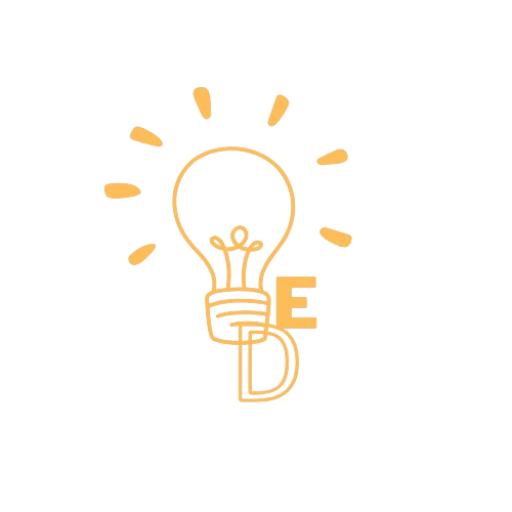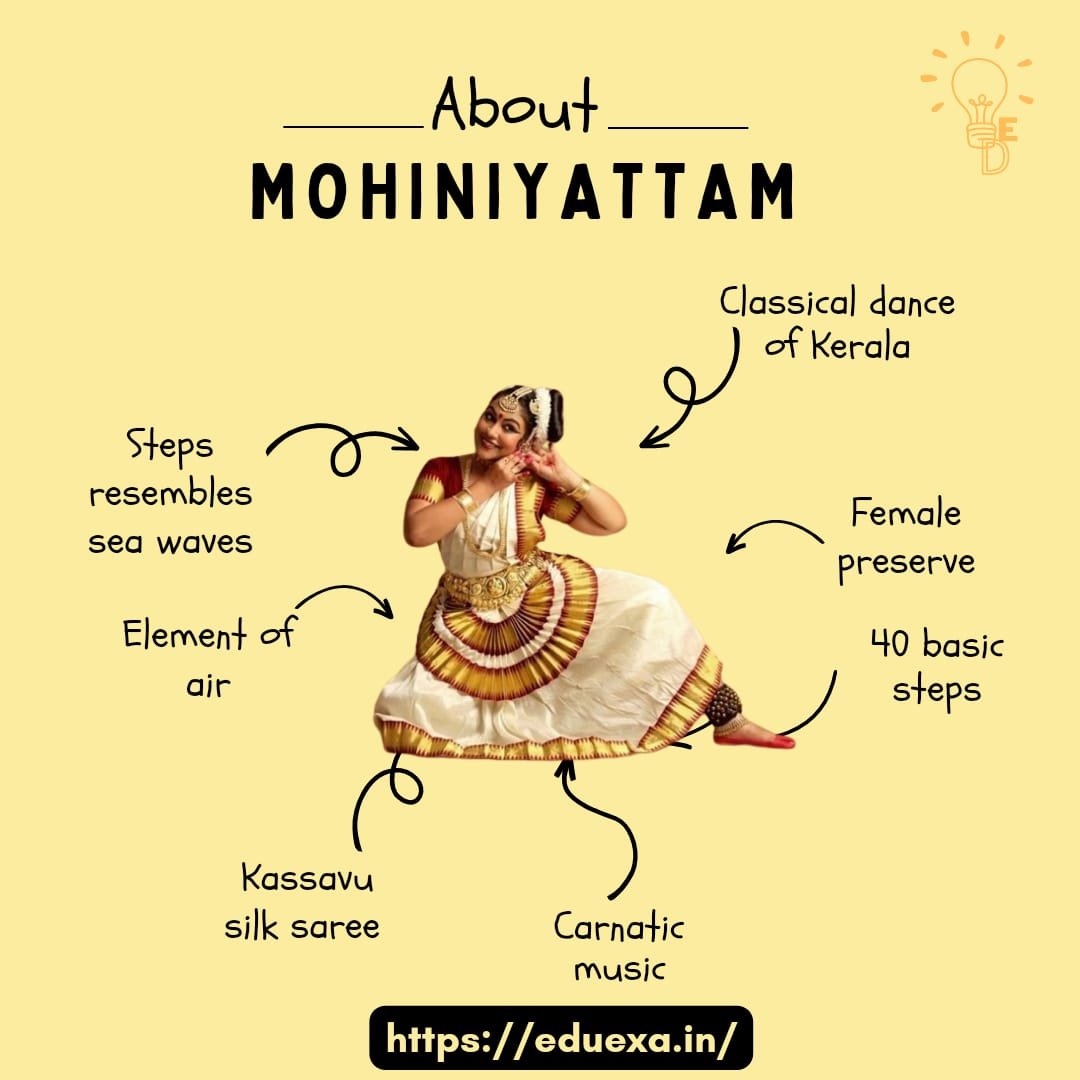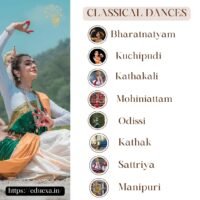Mohiniyattam
Mohiniyattam simply means dance of enchantress. It traces its origin to the mythological story of samudra manthan that is churning of the sea in which lord Vishnu disguises in the form of Mohini to take back the Amrit pot from the Asuras.
History
Historically this classical dance of Kerala was patronised by rulers of Travancore. Ancient texts discussing this dance form include Natya Shastra by Bharat Muni and Vyavharmala by Mazhamagalam Narayanam.
In the modern times it was revived by Malyali poet VN Menon under the patronage of Mukunda Raja.
Features of Mohiniyattam
- Mohiniyattam is one of the 8 Classical Dances recognised by Sangeet Natak Akademi.
- It symbolises the element of air through its performance.
- There are 40 basic dance steps in Mohiniyattam which are known as Attava Vakul.
- It started as a solo female dance preserved is still performed by females only.
- More than the footwork, emphasis is given to hand gestures and Mukhabhinaya or subtle facial expressions.
- The poses and the gestures of Mohiniyattam are inspired from bharatnatyam and energy is drawn from Kathakali.
- Mohiniyattam is characterised by its smooth, flowing movements, which are often compared to the swaying of a bamboo tree in the wind.
- Mohiniyattam is a dance form that embodies the feminine spirit, with an emphasis on grace, beauty, and sensuality.
- Mudras are yet another notable feature. Mohiniyattam uses a range of mudras (hand gestures) to convey emotions and tell stories.
- Mohiniyattam places great emphasis on facial expression and eye movements to convey emotions and moods.
- Costume is of utmost importance in Mohiniyattam. Mohiniyattam dancers wear traditional Kerala costumes, including a white kasavu silk saree with a gold border and ornamental jewellery.
- Mohiniyattam is often performed in temples and festivals.
- Carnatic music is used during the performance. The lyrics are in Manipravalam (which is a macaronic language based on Sanskrit and Tamil/Malayalam).
- Instruments used are:- cymbals, Veena, drums, flutes among others.
- Major themes include Vaishnavism or Krishna Bhakti.
Overall, Mohiniyattam is a beautiful and intricate dance form that showcases the grace, beauty, and expression of the feminine spirit.
Read about the Folk Dances of India Here.
Exponents
Famous exponents of Mohiniyattam includes Kalamandalam Kalyanikutty Amma, Madhuri Amma, Jayaprabha Menon, Sunanda Nair, Radha Dutta, Rema Shrikant, Dr. Vyjayanthimala Bali, and Dr. Padma Subrahmanyam.



